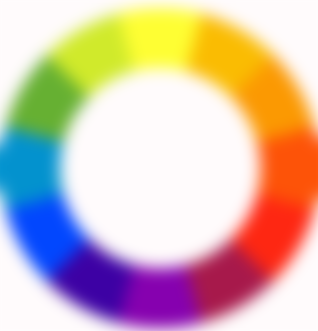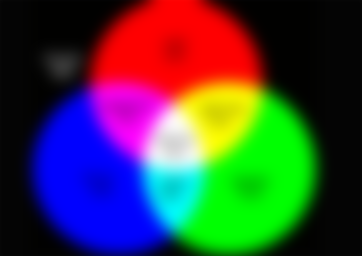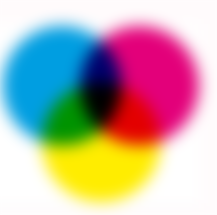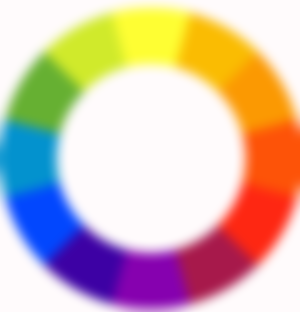
One of the greatest mysteries of the average man occurs in his head when he is told that the basic colors are red, green and blue and that by mixing them white is created. Of course, in art classes we learn and prove exactly how the basic colors are red, yellow and blue (ie magenta shade of red, yellow and cyan shade of blue) and that by mixing them we get black, more precisely, some shade of dirty-gray-brown-black . We all mixed tempera and saw that these colors really give some dirty, weird hue, and by no means white. And ... since when is green the primary color?
Therefore, a distinction should be made between basic colors in painting and basic colors in optics, in light.
The paints used in painting are some pigments - natural or synthetic, mixed with a binder (resins, waxes, oils, once upon a time the binder could be an egg) in an emulsion, usually a kind of paste or chalk or stick ( in colored chalk, dry pastels, wooden crayons, etc.). Pigments are not light - they are minerals or substances of organic origin (plant, animal) that absorb light of a certain wavelength, ie. they absorb a certain part of the electromagnetic spectrum, while they reject some part of the spectrum.
The leaves are green because the plant pigment chlorophyll absorbs sunlight in the spectrum of blue, red, yellow, orange and purple light (not color!), And reflects only that part of the EM spectrum that belongs to green light . The red rose or red apples are red because the petals have a pigment that reflects exclusively the light of the red part of the spectrum .
Thus, bodies either emit light or absorb it
Your clothes absorb light, but the screen of your monitor, TV, mobile phone emits light, ie. they represent sources of electromagnetic radiation. Among other things, that is the reason that monitors consume so much battery because they need to convert electricity into light, that is. energy of electromagnetic radiation. So, red on your monitor and red rose are not the same thing - red on the screen is really light of a certain frequency, and red rose is unabsorbed light.
For example, the yellow light on the screen is the result of a combination of red and green light, while the yellow color of the lemon is the result of the lemon peel having a pigment that absorbs red, orange, green, blue and purple light and reflects yellow light.
An RGB system (yes, an acronym for red-green-blue) is used to display colors on monitors, which is based on the principle of additive color mixing. The basic colors of this system are red, green and blue and mixing them creates white light, as you can see in the first photo in this text. This is about mixing light of different wavelengths, not mixing pigments that repel some parts of the spectrum and absorb others. These colors are the basic colors for the additive system, each pixel is defined with 3 data representing the value of these 3 basic colors. Monitors emit light and colors are obtained on the monitor by an additive combination of pixel colors.

The pigment system is what we learned in school, in art classes - that by mixing red and yellow we get orange, blue and red purple, and yellow and blue green, while by mixing these colors we get black in equal proportions. Pigments do not emit light, but reflect it, more precisely reflect light of a wavelength. This is a subtractive system, ie. a color system created by subtracting rather than adding color. In fact, the basic colors in this system are magenta, yellow and cyan and their combination creates black, but the press uses the CMYK system (cyan-magenta-yellow-key, where the "key" is black, so that CMY is not wasted unnecessarily to create black).
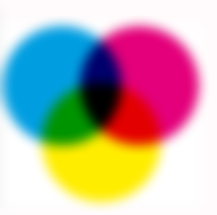
The real, pigmented system used in painting - red-yellow-blue (RYB) also belongs to the subtractive systems, but it is actually historicism, some beginning of modern color theory, and not exactly a “real situation”. However, red, yellow and blue are still considered basic colors in painting, while cyan, magenta and yellow are considered basic colors in print, and red green and blue are considered basic colors in additive mixing.
